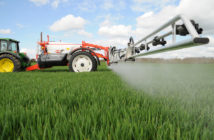Many farmers are questioning whether they will grow winter oilseed rape or not this year. The latest AHDB survey says that rape has gone down to just 361,000 hectares in England, a 32% drop from the previous year. But Neil Groom, technical director for Grainseeds, says that if you get everything right at the start you can achieve a crop which will give a Gross margin of over £600/ha.
“You should start by taking a careful look at the varieties available. More growers are considering reducing costs by considering conventional varieties, some of which are not on the Recommended AHDB list, but which can offer a more attractive financial package and afford increased seeding rates. In rape I think growers should look at the disease ratings and the maturity ratings to start with, as well as vigour and standing power. All Grainseed varieties have multigene resistance to Phoma stem canker, have good light leaf spot ratings and are tolerant to Verticillium. Es Mambo has a rating of 7.8 for Phoma, 6.4 for Light Leaf Spot and has been top in independent trials against Verticillium. It is an easy to manage, agronmically robust variety. Keeper has a 7 for Phoma, 6 for Light leaf spot, good Verticillium tolerance and excellent vigour. That’s a good start.”
“Rape needs to be established successfully into a moist, warm seedbed during the first two weeks of August. Historically rape follows winter barley in the rotation but this year the area of winter barley has plummeted due to the difficult conditions last autumn. Winter barley is thought to be down by at least 23% as is winter wheat. We think many growers are likely to plant as much first wheat as they can this year. So you will need to plan your rotation with care.”
Mr Groom points out that with a 3.5 t/ha yield, which is the long term average yield for rape, it can achieve a gross margin of over £600/ha. “What other crop
apart from a first wheat can do this?” he asks. He also points out that there is
good market demand for rape oil and rape meal. Other break crops have
much smaller market potential. Rape doesn’t need any specialist equipment, storage or marketing whilst other niche break crops could easily become over supplied with no alternative markets available.”
So in order to achieve a yield of 3.5 t/ha, you must get your rape crop off to a good start, says Mr Groom.
- Select your variety carefully by looking at its overall characteristics including disease ratings and vigour. The varieties Keeper and Elevation, bred by Mike Pickford, for the UK market have much larger seed than most varieties and so are able to provide more energy for the seed to germinate and grow. They show good autumn vigour. Elevation is Recommended for the North and is the second highest yielding conventional variety. Early maturing rape varieties allow the crop to be cut and moved off the farm before the wheat is ready to combine.
- So you will need to plan your rotation with care and if you are continuing with rape, plant winter barley this autumn to maximise success for 2021 sowings of rape. Work by NIABTAG show that a previous crop of rape increases yield of wheat by 31%, probably due to timeliness of sowing.
- Cut the straw of the previous crop higher – this puts off pigeons from landing and there is a theory that longer stubbles encourage spiders and spiders’ webs that can catch flea beetle adults.
- Flea beetles can detect green crops and where there is a longer stubble it appears mostly brown so tends to deter the insect pest.
- Drill the first two weeks of August into moist seedbeds.
- Use an adequate seed rate (for conventionals around 100/m²)
- Double roll to improve seed to soil contact.
- Consider companion cropping with something that masks the rape seedlings by sight or smell. One containing Berseem clover (make sure it is Tabor to prevent regrowth), Fenugreek and Buckwheat could be used.
- Keep your establishment costs as low as you can.
- Apply fertiliser in the autumn to give crop a boost.
Mr Groom concludes by saying that small management changes all add up to make a difference, so it is well worth concentrating on getting a good start.




